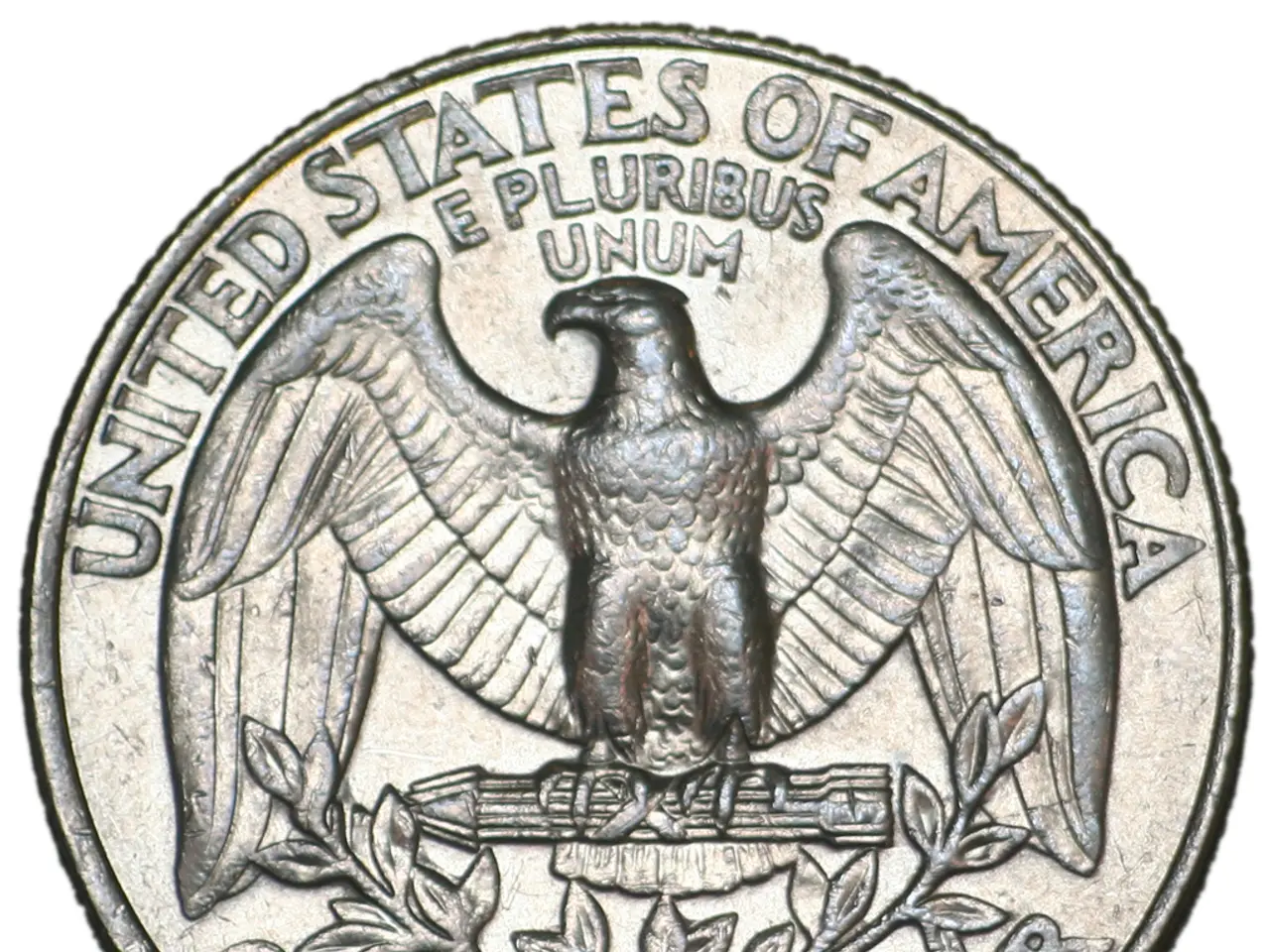Traditional finance giant Citi contemplates introducing a stablecoin, as traditional finance institutions persist in their adoption of cryptocurrency.
The stablecoin market is experiencing a significant surge, bridging the gap between traditional banking and digital assets. In July 2025, the total market capitalization of stablecoins reached an impressive $258.5 billion, with average daily trading volumes soaring to $143.1 billion [3].
Stablecoins are increasingly becoming central to global remittances and settlements, offering fast, low-cost alternatives to traditional banking channels. For instance, sending $200 from the U.S. to Nigeria via stablecoin can cost less than a cent, contrasting the over $7 cost through conventional means [2]. The accessibility of stablecoins, as they require only an internet connection for transactions, makes them particularly relevant for the unbanked population.
Regulatory clarity is playing a crucial role in the growth of the stablecoin market. The EU’s Markets in Crypto-Assets (MiCA) regulation is reshaping stablecoin issuance, providing clear rules for Electronic Money Tokens (EMTs) and Asset-Referenced Tokens (ARTs) to ensure compliance and stability [1]. This regulatory clarity is encouraging both crypto-native and traditional financial institutions to enter the market.
Traditional payment and banking infrastructure providers are embracing stablecoins. Companies like PayPal and Stripe have integrated stablecoins for merchant payments and are actively acquiring stablecoin-related startups [2]. The surge in stablecoin transaction volume and the growth in transaction fees suggest rising institutional activity alongside retail use [3]. As stablecoins become a foundational piece of the financial system, analysts project the market could reach $2 trillion by 2028 [2].
The Bank for International Settlements (BIS) highlights the potential for tokenized platforms, backed by central bank reserves, commercial bank money, and government bonds, to underpin the next-generation monetary system [4]. This suggests a future where traditional banking giants may issue or participate in stablecoin networks that combine the efficiency of blockchain with the trust and regulatory compliance of legacy finance.
Citigroup, one of the world's leading banks, is the latest traditional institution to express interest in the stablecoin market. Jane Fraser, the CEO of Citigroup, announced the bank's intentions to issue its own stablecoin for cross-border payments, aiming to bolster its surging revenue [5]. Fraser emphasized that clients want multi-asset, always-on, cross-border payments for financing and liquidity [6].
Citigroup processes $5 trillion worth of flows across borders in an average day [8]. The high transaction cost of up to 7% for some traditional remittance transactions is prohibitive, and stablecoins offer a more cost-effective solution [7]. Citibank's entry into the stablecoin market underscores the growing interest in this area, once solely the domain of native crypto firms [9].
Other traditional banking giants are also exploring the potential uses of stablecoins. Morgan Stanley is looking into stablecoins' potential uses for its clients [10]. However, challenges around compliance, interoperability, and systemic risk remain central to the sector's maturation [1].
Tether, the world's largest stablecoin issuer, processed $127.26 billion worth of transactions in the past 24 hours [11]. As the stablecoin market continues to evolve, it is likely that we will see deeper integration between crypto and traditional finance, driven by regulatory clarity, institutional demand, and the search for more efficient cross-border payment solutions [1][2][4].
- The surge in the stablecoin market has made these digital assets central to global remittances and settlements, offering fast, low-cost alternatives to traditional banking channels.
- Stablecoins' accessibility, as they require only an internet connection for transactions, makes them particularly relevant for the unbanked population.
- Regulatory clarity, such as the EU’s MiCA regulation, is encouraging both crypto-native and traditional financial institutions to enter the stablecoin market.
- Traditional payment and banking infrastructure providers are increasingly embracing stablecoins, with companies like PayPal and Stripe integrating stablecoins for merchant payments.
- As stablecoins become a foundational piece of the financial system, analysts project the market could reach $2 trillion by 2028, driven by regulatory clarity, institutional demand, and the search for more efficient cross-border payment solutions.
- Citibank, one of the world's leading banks, has expressed interest in issuing its own stablecoin for cross-border payments, aiming to bolster its surging revenue and provide cost-effective solutions to high traditional remittance costs.




